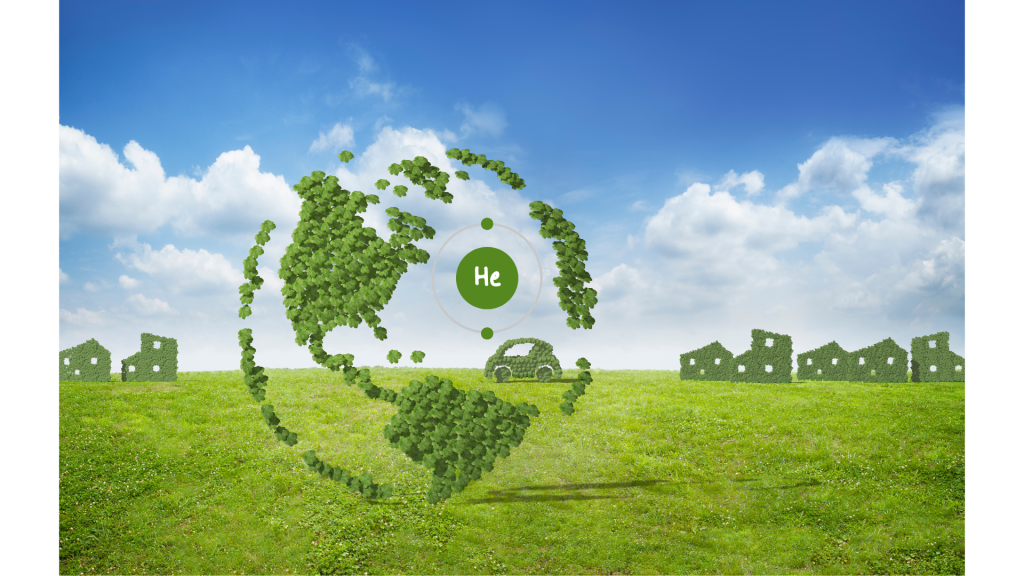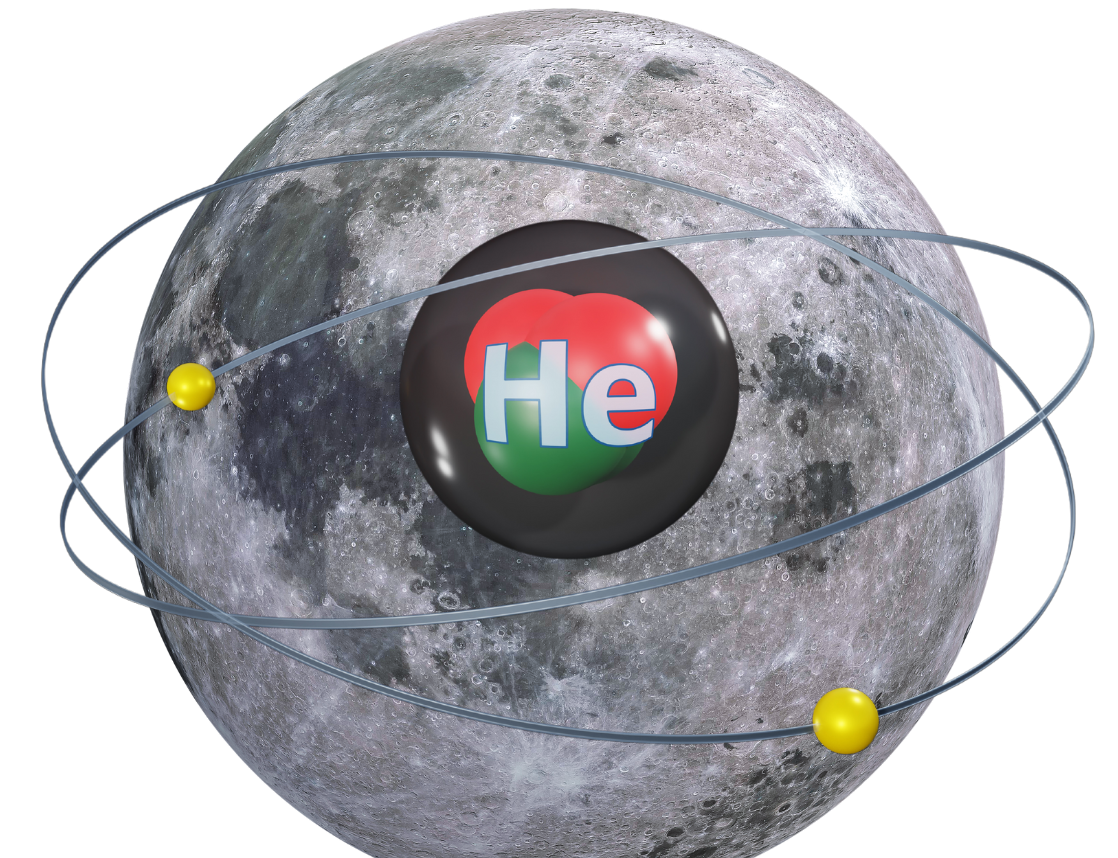It’s not just for party balloons! In the quest for clean energy solutions, helium has emerged as a promising contender. Did you know that helium is the only element that completely dissipates upon reaching open air? It leaves no trace or waste behind. Helium offers significant potential as a sustainable energy source. Let’s explore why helium could be the best clean energy option and why we should care. We’re looking at you in particular, environmental policymakers and researchers.

First: What Is Helium?
Helium is a colorless, odorless gas that ranks as the second most abundant element in the universe. It is the second element represented on the periodic table. Its symbol is He. Known for its low density and inert properties, helium is found in natural gas deposits on Earth. Unlike fossil fuels, helium is non-toxic and non-flammable, making it an eco-friendly alternative to traditional energy sources.
How Does Helium Work as a Clean Energy Option?
Helium’s suitability for clean energy lies in its use as a fuel for nuclear fusion — a process that mimics the sun’s energy production. Nuclear fusion produces minimal radioactive waste and emits no greenhouse gases. In short, it involves the fusion of two hydrogen atoms to produce helium, resulting in a tremendous amount of energy.

If nuclear fusion can be successfully replicated on Earth at an industrial scale, it has the potential to deliver virtually limitless supplies of clean, safe, and affordable energy to satisfy the global demand.
How Is Helium Used Today?
Currently, helium is utilized in various industries, from cryogenics and semiconductor manufacturing to medical MRI machines and scientific research. Its unique properties also make it essential in space exploration and rocketry.
Helium plays a crucial role in the development of quantum computers, due to its unique properties at extremely low temperatures. Quantum computers require environments close to absolute zero in order to function effectively, as quantum bits, or qubits, are highly sensitive to temperature fluctuations and decoherence. The isotope helium-3 is used in dilution refrigerators to achieve these remarkably low temperatures. The liquid helium cools the system, ensuring stable conditions for qubits to maintain their quantum states, allowing quantum computers to perform complex calculations at unprecedented speeds. This cooling capability is essential to advancing quantum computing technology, unlocking new potentials in computational power and scientific discovery.
How & Where Do We Get Helium Today?
Most helium extraction today occurs during natural gas production, where it is separated and purified from natural gas streams. The United States, Qatar and Russia are major producers of helium, with 75% of the world’s helium coming from the U.S. and Qatar. Most recently, countries including Canada and South Africa have started opening new helium plants; however, terrestrial helium supplies are limited, and international import/export challenges lead to volatility in availability and price. These limitations have prompted interest in alternative sources, notably lunar mining.
Why Should We Mine Helium From the Moon?
The moon’s surface is abundant in helium-3, deposited over billions of years by solar winds. Harvesting helium-3 from the moon presents a unique opportunity to secure a stable, long-term supply of this valuable isotope.
Mining helium-3 from the moon, although technologically challenging, offers several benefits. It could reduce Earth’s dependency on depleting reserves and support the development of clean fusion energy. NASA and other space agencies are exploring the feasibility of lunar helium-3 mining, which could revolutionize the energy landscape.
But picture all of the equipment for transportation, safe mining and extraction, and terrestrial storage and distribution. It boggles the mind, but it is attainable. In September 2022, China returned from a lunar mission with a moon rock that contained traces of helium-3, setting the world community abuzz with exploring methods to obtain helium-3 for global use. The race is on!
Why Even Care About Helium?
For government employees, environmental scientists, and policymakers, the appeal of helium as a clean energy option is clear. It aligns with global goals to reduce carbon emissions and transition to sustainable energy systems. Helium fusion’s potential to provide an abundant, clean energy source could significantly impact energy policy and environmental conservation.
For eco-conscious consumers, supporting helium-based energy initiatives represents an investment in a cleaner, more sustainable future. Advocacy and awareness can drive innovation and incentivize research into helium’s energy potential. Electronic vehicles are helpful when it comes to emission reductions, but they present their own sets of challenges, such as battery disposal and recycling, hazmat issues when an EV is involved in a collision, and a strain on the power grid.
Helium presents an alternative, with smaller quantities with cleaner outcomes powering more things, not just vehicles.
Conclusion
Helium’s promise as a clean energy option is undeniable. With its potential to deliver sustainable, low-emission power through nuclear fusion, helium addresses many challenges associated with current energy systems. By investing in helium research and considering lunar mining, society can take meaningful steps toward a greener future.

For those involved in environmental policy and science, helium represents an opportunity to lead the charge toward sustainable energy solutions. Continued research and public support are crucial in unlocking helium’s full potential and integrating it into the global energy mix. Keep your eyes on this developing topic.
For more information on the future of helium, visit resources from NASA, the National Renewable Energy Laboratory, Popular Mechanics magazine, and ArsTechnica, regarding a company that’s “going for it.”
The multi-faceted nature of Susan Powell’s professional background paints the picture of a lifetime learner who has always taken full control of her career path and decisions to apply her learning experiences in the most productive ways possible. Susan has brought her passion for writing and communications to every career upgrade and role, which helped her to secure the Marketing Director position for a cybersecurity company that she holds today. Fueled by her continued enthusiasm for earning applicable certifications, she continues to develop her marketing prowess and channel partner marketing skills. This former elementary teacher-turned-marketer is still a happy work-in-progress.





Leave a Reply
You must be logged in to post a comment.